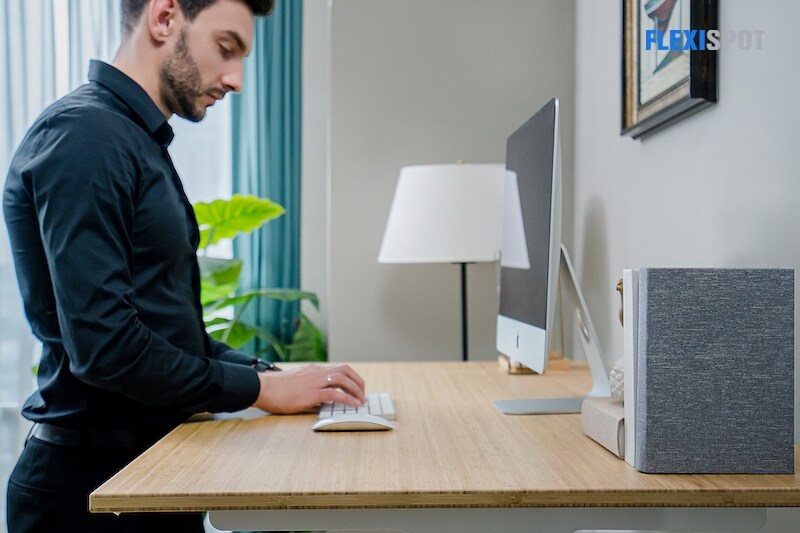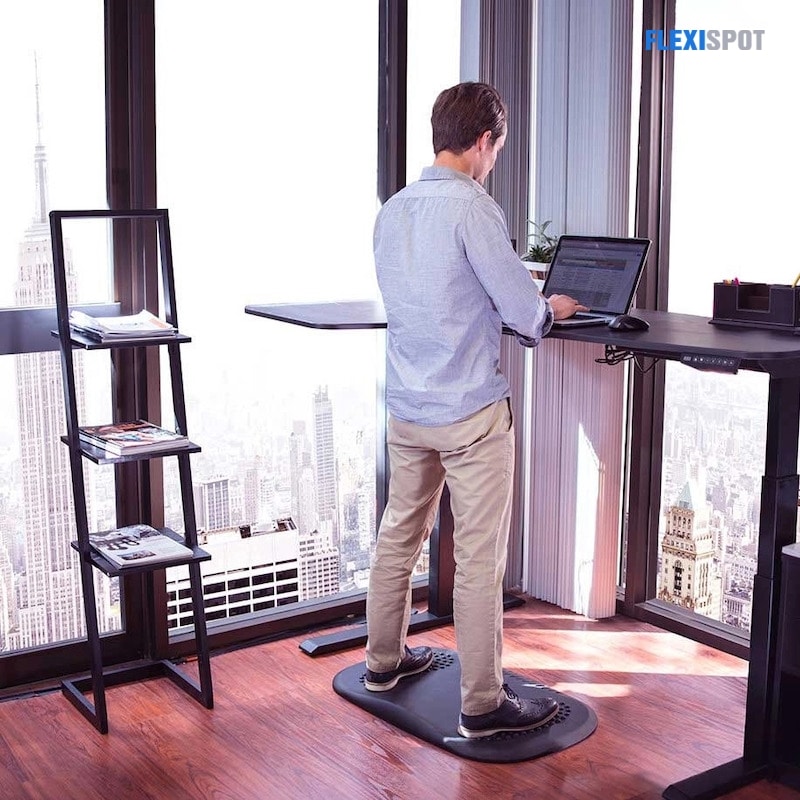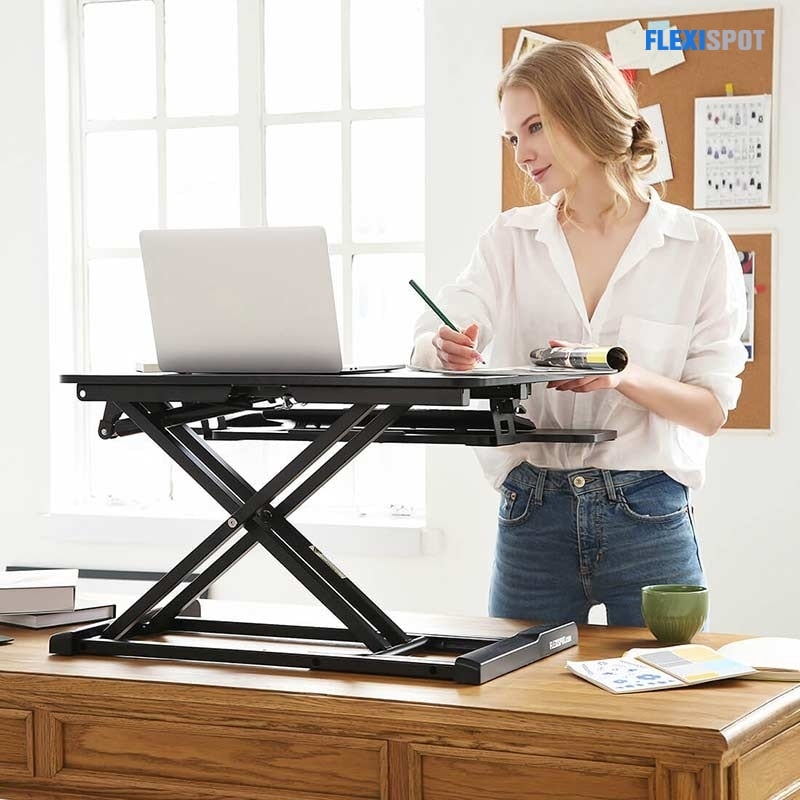Standing desks are frequently discussed for their health advantages, and it's easy to see why: the rewards are tremendous. Standing has been shown to provide numerous health benefits. Too much sitting reduces our life span by years. Standing has been related to a longer life expectancy for ages. Back discomfort is one of the most common work-related health complications, costing the economy millions of dollars in missed productivity. It has been discovered that using a standing workstation reduces lower back discomfort by 67 percent! Working at a desk is associated with various musculoskeletal issues, including headaches, backache, stiff necks, shoulder discomfort, and Repetitive Strain Injury.
But there is another benefit to standing workstations, one that benefits not only our bodies but also our minds. We all need to work on our mental health. We want to be more, accomplish more, and live our lives to the greatest. More efficient and creative. It's an enthralling and inspiring notion. Sitting can be detrimental to your creative talents. So, as revolutionary as it may sound, it may be time to give up sitting and try standing for a while. Standing desks are becoming more widespread, so there could be something to this trend. If you're wondering why a standing desk can help your next design project or book, consider the following reasons.
Concentration and Engagement
Standing circulates blood throughout the body and to the brain, improving cognitive function. When you sit for a prolonged time, everything appears to slow down, including your mind. People who utilize standing desks are more focused and immersed in their work than those who sit in a chair or hunch over a laptop.
Perspective
When you sit down at a desk to design, craft, write, etc., you are accustomed to seeing your concepts from a sea-level perspective. Anything you see at eye level beside your computer is most certainly the cubicle partition. When you stand up, you become much more connected with your environment. Perhaps you can view out a balcony, or maybe you can see an intriguing painting or picture on the opposite wall of your workplace. Simply getting up opens your eyes to a completely different visual world with that elevated viewpoint. You may come up with a better idea or bolder thoughts to convey with your audience than if you had remained seated.
Better Posture
Back pain is prevalent among office workers who spend most of their day sitting. Yet, multiple studies have shown that using a standing desk can significantly minimize back pain caused by prolonged sitting and improve posture.
Blood Circulation
When we sit for an extended period, not only do our lower extremities lose blood flow, but we also subject our bodies to a variety of hazards. Long stretches of sitting have been linked to an increased risk of heart disease, diabetes, and cancer. No matter how welcoming or comfortable your desk chair is, it is best to reevaluate and make a change if it can hurt you. You have that option with a standing desk. Because you'll be standing, your legs and feet will have much better blood circulation, and you won't have to suffer from uncomfortable stiffness or numbness. Not only that, but you will feel less tired as well.
Enthusiasm
When people start utilizing a standing desk, one of the first changes they notice is more stamina. The standing desk provides the same boost of energy as a caffeinated beverage. Most people feel that they have more drive when they use a standing desk to complete activities regularly. People who extend their standing time by up to 60-90 minutes are more energetic and feel more enthusiastic than those who use regular desks, according to research, without jeopardizing their work performance.
Movement
The act of physically moving back from your work is a vital aspect of the creative process that goes into creating a painting or sculpture. Those who have worked on a standing desk for a few years may realize that artists must move around and occasionally modify their creations. A standing workstation is preferable to a seated desk for visual rearrangement.
Collaboration
We end ourselves slumped over onto our computers, and the world dissolves as the only thing we focus on is the monitor in front of us. That can be a good thing at times, but the reality is that we do not always work in that zone of total concentration and focus. What's fantastic about standing desks is that you're not as constrained. You might still hit that zone if you're standing; your body can start rocking back and forth as your mind fires up. Standing up makes you more likely to consult teammates and communicate if you are trailing and looking for inspiration or enthusiasm. You are more open to innovation when you stand up, which is a crucial element of delivering your best. And besides, two heads are better than one, and if you can gain insight from one of your colleagues to strengthen your website, a standing desk may make those possibilities for collaboration more commonplace.
Less Exhaustion
Overcoming fatigue is critical in being more effective and creative at work and when working on your next major design. If your body is exhausted, chances are your thoughts are as well. And if you have to take more smoking breaks or go for a quick walk outside, you're likely wasting time that you could be using to be more efficient or creative at work. When you consider how much time you might end up wasting taking these short but regular breaks throughout the day, there is a very high likelihood that if you adapt to a standing desk, your workday will be more constructive, your writing will be better, and maybe you'll be able to go home a lot sooner because you take fewer rest periods than when you had a standard desk.
Creativity
Conventional drab workplace cubicles are typically seen as icons of harsh, energy- and morale-sapping company culture for a reason. They are generally cramped, uninteresting, boxy, and have a restricted flow of space and light. Sitting at a desk does not always imply working in a cubicle, but it frequently does. If you work in a cubicle, but from a sit-stand desk, you are less prone to suffer from the lethargy that afflicts individuals sitting down at workstations. That's because the more open area you are exposed to, the more creative you would be. If you can work from a standing desk, you would realize an immediate improvement since you will get to see across your workplace instead of just a few meters around you. You may even have a perfect view out into the rest of the block if you are fortunate enough to face a window. The vast space will boost your imagination and enthusiasm when you stand up, allowing you to generate even better stories, designs, or ideas.
Standing up boosts your creativity by improving circulation to the body and brain and keeping your blood moving. You can think more creatively if your blood flow is enhanced. More workplaces are discovering that limiting chairs improves creativity during group discussions and brainstorming sessions. As a result, if a bit of change in your life can result in significant improvements in your imagination and ingenuity, you must be willing to make it.


